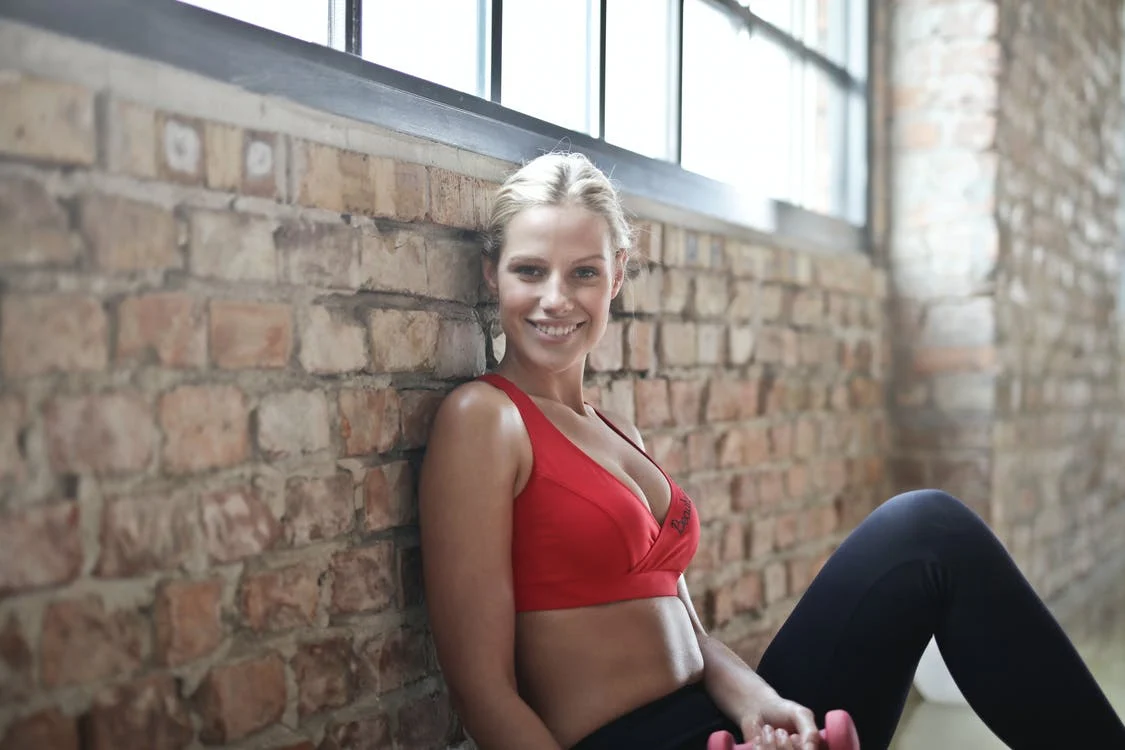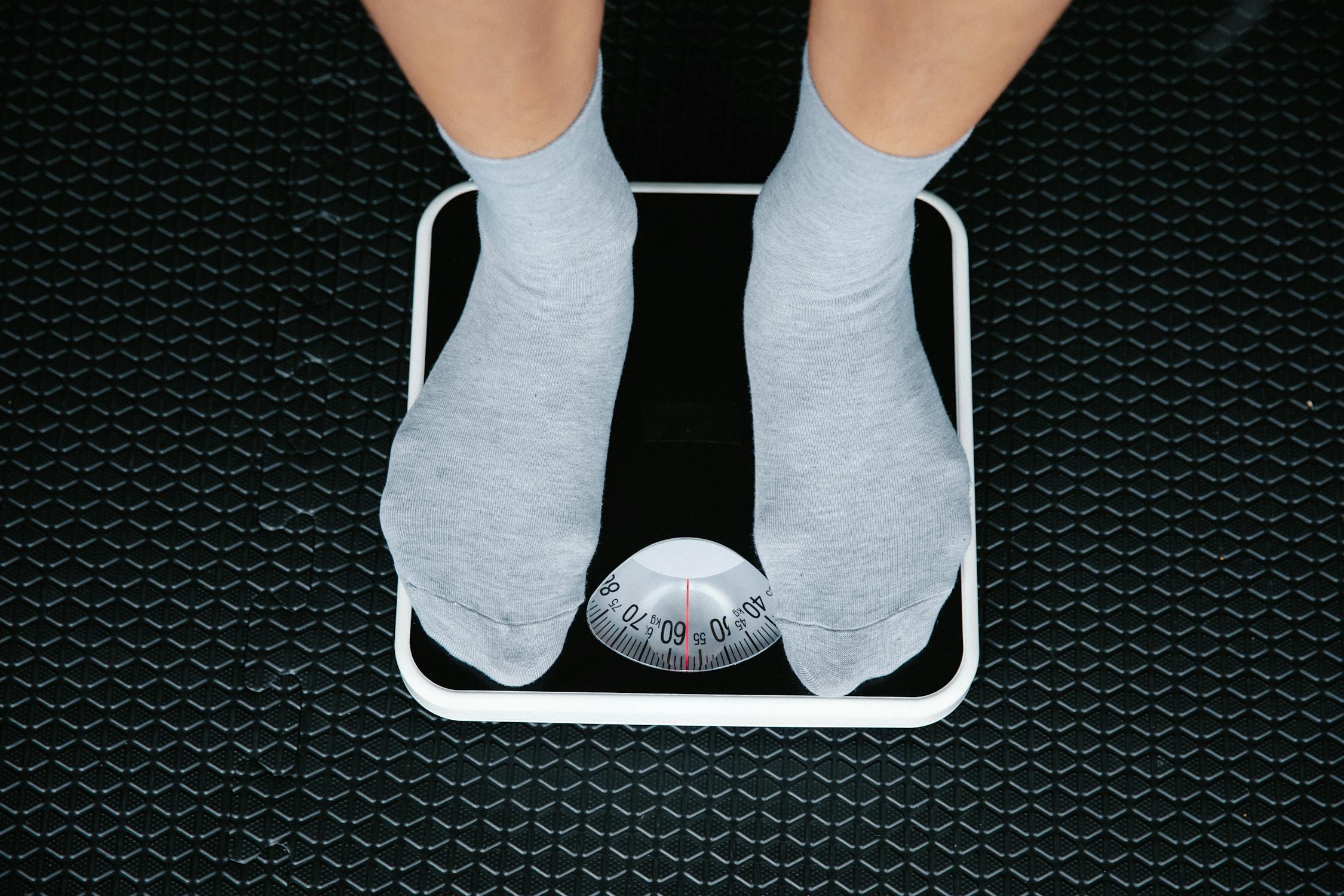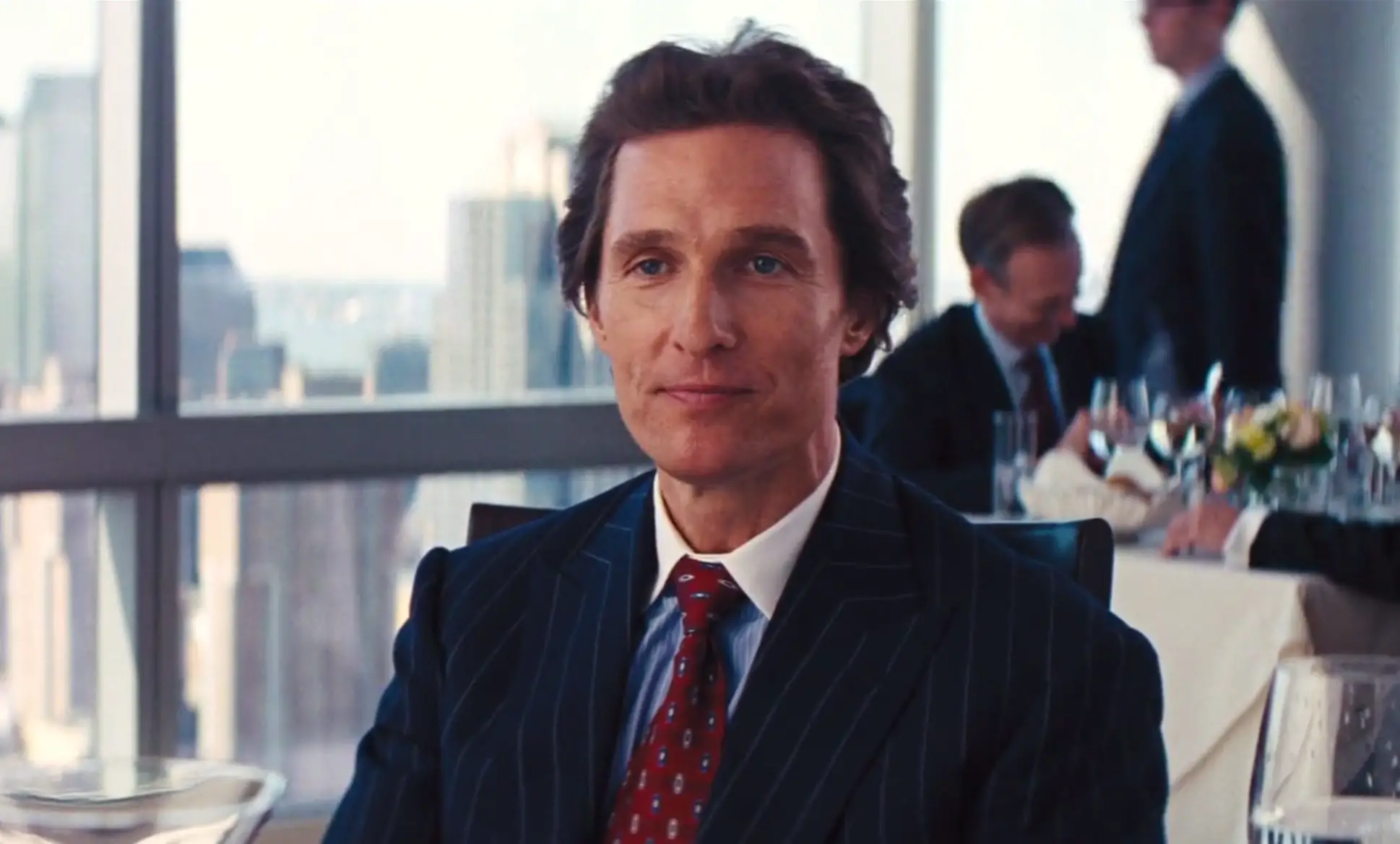Question:
How Do Actors Lose Weight Fast for Roles?
(By Ray Reese)
 (Photo: Ketut Subiyanto | Pexels)
(Photo: Ketut Subiyanto | Pexels)
How Do Actors Memorize Dialogue?
How Do Actors Cry on the Spot?
Actors often face the challenge of transforming their bodies to fit specific roles, sometimes requiring rapid weight loss. Achieving such dramatic results involves a combination of strict diet plans, intense workout regimens, professional guidance, supplementation, hydration strategies, and occasionally, extreme measures. Here’s how some actors manage to shed pounds quickly for their roles.
Strict Diet Plans
 (Photo: Adriano Bragi | Pexels)
(Photo: Adriano Bragi | Pexels)
Caloric Deficit
One of the primary strategies actors use is creating a caloric deficit, which means consuming fewer calories than they burn. This approach forces the body to use stored fat for energy, leading to weight loss.
High-Protein, Low-Carb Diets
To preserve muscle mass while losing fat, actors often follow high-protein, low-carb diets. Protein helps maintain muscle, which is crucial for metabolism and the overall look required for many roles.
Whole Foods
Actors typically eat whole, unprocessed foods like vegetables, lean meats, and fruits. These foods are nutrient-dense, keeping them full while providing essential vitamins and minerals.
Intermittent Fasting
Intermittent fasting is another popular method, where actors restrict their eating to specific windows of time, such as 8 hours a day, and fast for the remaining 16 hours. This can help reduce overall calorie intake and improve metabolic health.
Intense Workout Regimens
 (Photo: Samer Daboul | Pexels)
(Photo: Samer Daboul | Pexels)
Cardio Exercises
Cardio is essential for burning calories. Activities like running, cycling, swimming, and High-Intensity Interval Training (HIIT) are commonly used to accelerate fat loss.
Strength Training Lifting weights is crucial for building and maintaining muscle mass. Muscle tissue burns more calories at rest, helping actors stay lean.
Personal Trainers Many actors work with personal trainers to develop customized workout plans. Trainers ensure that actors exercise effectively and safely, maximizing their results in a short period.
Professional Guidance

Nutritionists
Nutritionists play a key role in helping actors achieve their weight loss goals. They design meal plans that meet the actor’s nutritional needs while promoting fat loss.
Doctors
Medical professionals monitor the actor’s health throughout the weight loss process, ensuring they do not suffer from nutrient deficiencies or other health issues.
Supplementation
Protein Supplements
Protein supplements can help actors meet their daily protein requirements, supporting muscle maintenance and growth.
Vitamins and Minerals
Multivitamins and other supplements ensure actors get the nutrients they need, especially if they are on a restrictive diet.
Fat Burners
Some actors use fat-burning supplements that claim to boost metabolism and increase fat loss. These should be used cautiously and under professional guidance.
Hydration and Detox
 (Photo: Andrea Piacquadio | Pexels)
(Photo: Andrea Piacquadio | Pexels)
Drinking Plenty of Water
Staying hydrated is essential for metabolism and overall health. Drinking enough water helps reduce water retention and bloating.
Detox Teas and Juices
While not universally endorsed, some actors use detox teas and juices to cleanse their bodies and reduce bloating. The effectiveness and safety of these products can vary.
Extreme Measures
 (Photo: Andrea Piacquadio | Pexels)
(Photo: Andrea Piacquadio | Pexels)
Crash Diets
In extreme cases, actors might resort to crash diets that severely restrict calories. This method is risky and should only be done under medical supervision.
Sauna and Sweat Suits
To lose water weight quickly, actors might use saunas or wear sweat suits. This technique is often employed just before filming scenes where they need to look especially lean.
Dehydration Tactics
Some actors reduce water intake to appear more defined, but this method is dangerous and only suitable for very short periods.
Professional supervision is necessary to ensure health and safety throughout the process. Rapid weight loss should be approached with caution, and individuals should consult with healthcare providers before making significant changes to their diet or exercise routines.
What Actor Lost a Lot of Weight for a Role?
Extreme Transformations That Show the Dedication of Hollywood’s Most Committed Performers
(By Todd Smith)
 (Photo: Annushka Ahuja | Pexels)
(Photo: Annushka Ahuja | Pexels)
Christian Bale in The Machinist
When discussing dramatic weight loss for a movie role, one name immediately stands out—Christian Bale. Known for his unwavering commitment to his craft, Bale’s physical transformation for the 2004 psychological thriller The Machinist is one of the most extreme in cinematic history.
To portray Trevor Reznik, an insomniac factory worker suffering from extreme paranoia and guilt, Bale dropped over 60 pounds. His final weight was a startling 120 pounds on his 6-foot frame. He achieved this by reportedly subsisting on a daily diet of one can of tuna, an apple, and black coffee, while also exercising rigorously.
“I had to know if I could do it,” Bale said in an interview. “I had to find out if I could push my body and still function as an actor.”
His haunting appearance in The Machinist stunned audiences and critics alike and is still widely cited as the gold standard for method acting.
Matthew McConaughey in Dallas Buyers Club

Matthew McConaughey’s Oscar-winning performance as Ron Woodroof in Dallas Buyers Club (2013) also required significant weight loss. To play the role of an AIDS patient diagnosed in the 1980s, McConaughey shed around 50 pounds from his usual weight.
He described the transformation as both physically and mentally taxing. His diet was similarly spartan: “I’d eat fish, vegetables, egg whites, a lot of tea. I lost 2.5 pounds a week.”
McConaughey not only won the Academy Award for Best Actor for his gripping portrayal, but he also earned widespread respect for the intensity of his preparation.
“The power of the story kept me going,” he said. “It wasn’t about suffering; it was about honoring the real man behind the role.”
Tom Hanks in Philadelphia and Cast Away
Tom Hanks underwent significant transformations for two very different films. In Philadelphia (1993), he played a lawyer dying of AIDS, for which he lost approximately 26 pounds. His performance earned him his first Oscar for Best Actor.
But it was his role in Cast Away (2000) that required a more extreme shift. To portray a man stranded on a desert island, Hanks lost over 50 pounds. The film was shot in two segments: the first before his weight loss, and the second after a year-long production break that allowed him time to slim down and grow out his beard and hair.
“It was tough,” Hanks later said. “I didn’t exercise. I just made sure I was eating properly and slowly dropped the weight.”
His performance remains one of his most iconic, highlighting the power of physical commitment in storytelling.
50 Cent in All Things Fall Apart
Rapper and actor Curtis “50 Cent” Jackson took a surprising turn in his acting career by dramatically losing weight for the 2011 film All Things Fall Apart. To portray a football player battling cancer, he dropped from 214 pounds to a shocking 160.
The transformation was achieved over a nine-week period through a liquid diet and a daily treadmill routine for three hours.
“I was starving,” he admitted. “But I wanted to show people that I was serious about acting.”
Though the film didn’t receive a wide release, 50 Cent’s dedication drew attention and respect for pushing beyond his musical persona.
Jared Leto in Dallas Buyers Club
Like McConaughey, Jared Leto also went through a stunning transformation for Dallas Buyers Club. He lost around 30 to 40 pounds to play Rayon, a transgender woman battling AIDS.
Leto immersed himself in the character, staying in costume and in character even when the cameras weren’t rolling. His weight loss helped him physically embody Rayon’s frailty and vulnerability.
“It changes the way you walk, the way you talk, everything,” Leto explained.
His performance earned him the Academy Award for Best Supporting Actor, marking a career resurgence for the former rockstar-turned-actor.
Natalie Portman in Black Swan
It’s not just male actors who push their bodies for their craft. Natalie Portman underwent intense training and a strict diet for her role as a ballerina in Black Swan (2010).
She lost around 20 pounds from her already slender frame and trained for up to eight hours a day in ballet, swimming, and cross-training. Her transformation helped her fully embody the tortured dedication of her character, Nina.
“It was one of the most physically and emotionally demanding roles I’ve ever done,” Portman revealed.
Her efforts paid off—she won the Academy Award for Best Actress and was praised for delivering one of the most compelling performances of the decade.
Charlize Theron in Monster and Tully
Charlize Theron is more widely known for gaining weight for roles (like in Monster and Tully), but she also lost significant weight for various performances. However, her ability to transform her body in both directions has earned her immense respect in the industry.
For Monster (2003), although she famously gained 30 pounds to play serial killer Aileen Wuornos, she also had to lose the weight quickly for her subsequent roles. The discipline required to shift her body back to Hollywood norms was intense and grueling.
Her dual transformations speak volumes about the pressures and sacrifices female actors face in the film industry.
Chris Hemsworth in Limitless and Furiosa
While Chris Hemsworth is typically known for his ripped physique as Thor, he showed his range when he lost weight for In the Heart of the Sea (2015). To play a starving sailor stranded at sea, Hemsworth underwent a strict diet that reduced his intake to just 500 calories a day at times.
“We kind of went insane,” he admitted. “We all felt like we were on the edge of dying.”
More recently, for Furiosa: A Mad Max Saga (2024), Hemsworth once again adjusted his weight and look dramatically to fit the gritty, war-torn atmosphere of the post-apocalyptic world. His adaptability shows he’s more than just muscle—he’s a serious actor willing to take risks.
Anne Hathaway in Les Misérables
Anne Hathaway lost 25 pounds to portray the suffering Fantine in Les Misérables (2012). To convincingly play a woman dying of tuberculosis in 19th-century France, Hathaway went through an intense physical transformation.
She cut her hair on camera and adhered to a near-starvation diet that left her physically and emotionally depleted.
“I was in such a state of deprivation—physical and emotional,” Hathaway said. “When I got home, I couldn’t react to the chaos of the world without being overwhelmed.”
Her heartbreaking performance earned her an Oscar for Best Supporting Actress.
Conclusion: The High Cost of Hollywood Transformation
Dramatic weight loss for movie roles is a powerful testament to an actor’s dedication, but it also raises questions about health, sustainability, and industry pressures. While these transformations can enhance realism and impact, they’re not without consequences. Christian Bale has spoken openly about the toll it took on his metabolism, and Tom Hanks later developed Type 2 diabetes, which he partially attributed to weight fluctuations for roles.
These physical transformations make for compelling performances and award-worthy acclaim, but they often come at great personal cost. The line between dedication and danger is thin—and these actors walk it bravely in the name of art.
How Do Actors Keep Slim?
The disciplined secrets behind celebrity physiques
(By Todd Smith)

A Demanding Profession Requires a Demanding Routine
From red carpets to on-screen close-ups, actors are under constant pressure to maintain a lean physique. For many, staying slim isn’t just about looking good—it’s part of the job. Whether they’re preparing for superhero roles, period dramas, or simply staying camera-ready, actors must follow rigorous routines to maintain their figures.
The key to their success? Discipline, commitment, and often an army of professionals helping them manage their physical appearance. Let’s dive into the methods and examples that keep Hollywood’s finest in top form.
Strict Diet Plans Tailored for Performance
One of the most crucial elements of staying slim is diet. Actors often work with nutritionists to tailor eating plans that support lean muscle mass while limiting fat gain. These diets typically prioritize high protein, low sugar, and moderate carbohydrates—especially from whole, unprocessed sources.
Example: Chris Pratt’s transformation for Guardians of the Galaxy involved cutting out alcohol, eating lean proteins like chicken and fish, and loading up on vegetables. He reportedly ate 4,000 calories per day at one point—but all clean food that fueled his muscle-building while shedding fat.
Example: Natalie Portman, for her role in Black Swan, followed a vegetarian diet with controlled portions, focusing on small, nutrient-dense meals throughout the day. She lost around 20 pounds through a mix of calorie control and ballet training.
Customized Workout Regimens
Diet may be key, but exercise is the other half of the equation. Many actors spend hours in the gym each week with personal trainers crafting routines that match the roles they’re preparing for.
Example: Hugh Jackman worked with trainer David Kingsbury to get ripped for his role as Wolverine. His routine included heavy lifting (squats, deadlifts, bench press) combined with fasted cardio to burn fat in the mornings.
Example: Brie Larson’s prep for Captain Marvel included deadlifting over 200 pounds, push-ups with chains on her back, and even pushing a Jeep to build real-world strength and stamina.
Workout styles vary—from high-intensity interval training (HIIT) and circuit training to dance and yoga—but the common thread is consistency and progression over time.
Fasting and Intermittent Eating Windows
Intermittent fasting has gained popularity in recent years and is now a go-to strategy for many actors. The concept involves eating during a specific time window—usually 8 hours—and fasting for the remaining 16.
Example: Terry Crews swears by intermittent fasting. He eats from 2 p.m. to 10 p.m., and fasts the rest of the day. This routine helps him stay lean while still consuming enough calories to maintain muscle mass.
Example: Jennifer Aniston has spoken about using intermittent fasting, usually starting her meals later in the day and staying hydrated with celery juice, coffee, and water until it’s time to eat.
Bodyweight and Functional Training
Not all actors bulk up or focus on lifting heavy weights. Many choose to stay lean with bodyweight movements and functional fitness that improves mobility, endurance, and core strength.
Example: Zendaya prefers dancing, Pilates, and full-body bodyweight workouts over traditional weightlifting. She told Seventeen that she doesn’t enjoy going to the gym but stays active through things she loves like dancing.
Example: Jake Gyllenhaal, for Southpaw, included 2,000 sit-ups a day and boxing-style functional routines to get shredded without traditional gym bulk.
This style of training helps actors achieve a defined look without becoming overly muscular—a lean, camera-friendly physique that works well for a wide range of roles.
On-Set Challenges That Burn Calories
Filming can often double as a workout. Long days on set, performing physical scenes, and repeating action sequences over and over can burn hundreds of calories per hour.
Example: Tom Cruise famously performs his own stunts, which requires intense cardiovascular training and real-time physical effort during scenes. Running, jumping, climbing—all captured on camera, but also effective ways to stay lean.
Example: Daisy Ridley trained with martial artists and stunt coordinators for Star Wars, spending hours in sword-fighting practice, which naturally helped her stay slim and agile.
Even costume demands—like wearing tight suits in The Avengers or heavy armor in fantasy epics—can become part of the actor’s workout.
Coaching, Accountability, and Support Teams
Behind every slim actor is usually a team: trainers, chefs, assistants, and wellness coaches who help them stay on track. Accountability is one of the biggest factors in maintaining discipline.
Example: Dwayne “The Rock” Johnson has an entire “Iron Paradise” gym setup that travels with him, and a support system including chefs and trainers. His daily Instagram updates keep his followers—and himself—accountable.
Example: Margot Robbie, though not a fan of intense workouts, works with trainers who tailor lighter activities like Pilates, ballet, and stretching that suit her body type and help her maintain a graceful figure.
Many actors also use wearable fitness trackers and apps to monitor everything from calorie intake to sleep and step count.
Mental Health and Mindful Eating
Staying slim isn’t only physical—it’s also mental. Many actors focus on mindfulness, stress management, and conscious eating to avoid emotional bingeing or burnout.
Example: Emma Stone has talked about the importance of therapy and mental balance in avoiding body image pressure. She focuses on health over looks, which ironically helps her stay in great shape.
Example: Chris Evans combines healthy eating with downtime, avoiding the mental traps of constant dieting. He treats food as fuel and doesn’t overly restrict, helping him maintain consistency.
Yoga, meditation, and journaling have become regular practices for actors to stay centered—because stress often leads to weight gain through hormonal imbalances or poor habits.
Short-Term Transformations vs. Long-Term Maintenance
Some actors undergo extreme short-term transformations for roles, which they may not maintain year-round. Others aim for sustainability.
Example: Christian Bale famously lost over 60 pounds for The Machinist, then bulked up drastically for Batman Begins. These changes were not healthy or sustainable, and Bale has since spoken about the toll it took on him.
Example: Paul Rudd, who became unexpectedly ripped for Ant-Man in his 50s, focused on slow, steady changes with help from a nutritionist and a strict no-alcohol policy. His approach was much more sustainable and balanced.
The healthiest actors focus on balance—finding what works for their body, time, and mental well-being while making small, consistent choices over years, not weeks.
Supplements, Shakes, and Smart Hacks
While food and fitness do most of the heavy lifting, actors also make use of supplements—protein shakes, vitamins, and metabolism boosters—to support their goals.
Example: Zac Efron used whey protein and BCAAs (branched-chain amino acids) during his intense training for Baywatch. He also drank bone broth and followed a low-carb, high-fat eating pattern to get incredibly cut.
Example: Scarlett Johansson worked with a nutritionist to follow a nutrient-timed diet and used vegan protein supplements during her training for Black Widow.
Hydration is another hack actors rely on—drinking water consistently can curb cravings, reduce bloating, and improve energy.
Consistency Is the Real Secret
While celebrity routines might sound glamorous, they all rest on a foundation of simple, consistent habits: clean eating, regular workouts, mental discipline, and support.
Actors don’t have magic tricks—they have structure. They treat their bodies like part of the job. And while most of us won’t be on a movie set any time soon, we can still apply their secrets to our own lives.
With a little planning, consistency, and inspiration from Hollywood, staying slim becomes not just possible—but achievable.
You Might Also Like:
Why Are Females Now Called Actors?



